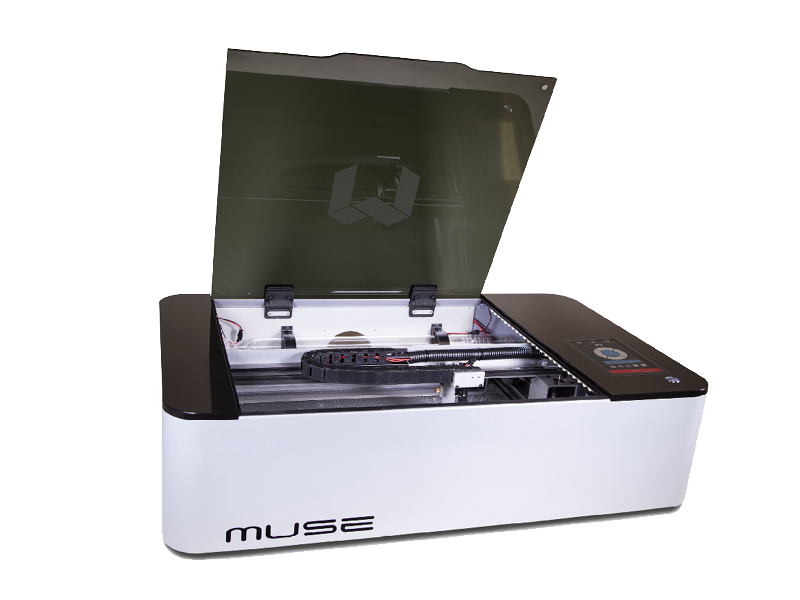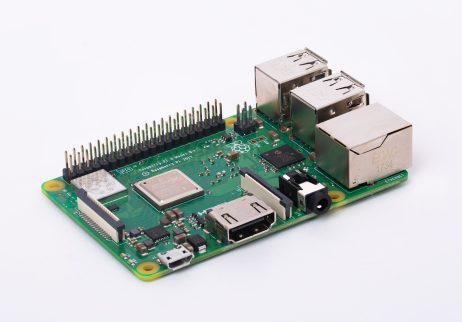One of the most commons things I get asked about are the types of tools that are a must have for a Makerspace when getting started. It is an understandable question. Sometimes, a teacher is given grant money and they need to spend it quickly and are looking for some tips on what to purchase. To help save some those teachers some time, I will provide what a list of the most popular items in the Knights Forge Innovation Lab at University Liggett School.
If given the time to build a space, the first thing you should do is talk to students and teachers to see what their needs are before going and spending money on big ticket items. As the Makerspace Director, I ordered the following tools based on the needs of the students and the types of projects teachers want students to create in the classroom. This is not an exhaustive list and you do not have to have all or any of these tools to have an amazing space in your room or school. These are just some of the awesome tools in our space that students are using to create tremendous projects.
Copper Tape,
Batteries,
LEDs
These three items can be used for any project you want to have lights! Teaching simple circuits using the copper tape, batteries, and LEDs is a wonderful way to engage students in Science curriculum. It is also fun to have in the Makerspace when students want to add lights to things. These are very inexpensive purchases that can have many different uses, so stock up your makerspace with these guys and watch the kids have fun.
Dremel 3D45 3D Printer
We have three of these amazing printers in our space and they are constantly printing. They were used to help print skulls for the high school Forensic Science class to aid in facial reconstruction. Students have used it to make phone cases, parts for a Nerf Gun they were building, and pieces for art projects. This printer has a heated bed to help prevent warping as well as aided leveling. Another awesome part of this printer is that it can print in Nylon and traditional PLA. Further, the filament from Dremel has a chip that allows the printer to read the type of filament you have placed in the printer and all of the settings adjust for that filament. It makes printing so much easier for people new to device and the various settings. The Dremel printers are sturdy and have not caused me a single issue since they were purchased last year.
I will very rarely declare something as a must have for a makerspace, but cardboard is one of those consumables that have so many uses. If you are going to have cardboard in your space, then I highly recommend that you pick up a Makedo kit. These kits are plastic screws, saws, and screw drivers that allow users to connect their pieces of cardboard and then reuse the makedo parts as needed. So much duct tape is used in cardboard construction, it can become a bit pricey. The Makedo is perfect is allowing for prototyping ideas in a Makerspace without the waste of tape. My students love these and the help keep the cardboard creations under control.
I love littleBits. There, I said it. These little guys are in constant use by students in the Makerspace. We are always having great discussions on circuits and switches and lots of other fun engineering ideas based on what students are creating with littleBits. The workshop kit might seem a bit pricey, but it allows for multiple students to come together and build. You can also check out the
Pro Library Set if you have the funds and want even more students to build using littleBits. I have found that this tools is also great for students who fidget and need something to play with in their hands. Building with these has helped many fidgety students sit and focus while exploring littleBits.
I use this app all of the time with students because it takes a crystal clear image of a student design and allows me to send it through Airdrop of email to my computer or the student's computer. Using the CNC machines or the laser cutter can be time consuming, but if you can just scan a student drawing and upload it directly to the program you are using, life is so much easier. It's a free download on your iOS device and I have been using it for years for personal document scanning and have only just seen the value in capturing student designs with it. It's a simple addition to any space.

The world of CNC making became a whole bunch easier with the desktop Carvey. This guy is a self contained carving unit that you do not have to assemble. Everything comes ready made for you to dive into the world of CNC carving. Inventables has put together a wonderful product with an easy to use, web-based software that has a free premium account for educators! Each Carvey does need it's own computer because the computer needs to be connected for the duration of the cut job. Using an old laptop stripped down to only run a browser would be fine. Raspberry Pi (Linux) support is possible, but takes a few extra steps if you want to go that route. The Chinese language students designed stamps of their Chinese name and we carved them on the Carvey. It was a fun and simple project for the students. If you are looking for a larger CNC machine for your space, check out the X-Carve from Inventables. That is a heavy duty CNC that requires you, or your students, to assemble. Once it is assembled, you will have a much larger cutting space for creating large signs and other projects. Definitely check them out.
I swear by this tape. I just love it so much. It holds everything down and just where I want it. Students and I have used it for various projects. I recommend this tape as a tape you need while prototyping or building. If you are looking for tape for duct tape projects, there are plenty of other tapes you should use for those projects. This is heavy duty, not messing around, tape that is perfect for a makerspace.

The Muse is the desktop Laser Cutter from Full Spectrum Laser. They have a long history of making laser cutters and this is their hobby laser that is perfect for the classroom. It takes a little bit of patience to set up and align the mirrors, but once that is done, you will be cutting, rastering, etching, and more in no time. The Muse sports a design that allows you to remove the bottom so you can place it on top of larger items (doors, table tops, etc) that do not fit in the machine and still use it to etch designs. The interesting part of the Muse is that you connect to it through the IP address that has the design software. You design on the machine. I like it because it allows you to adjust anything you want before you start. The onboard camera takes a picture of the laser bed to allow for accurate placement of materials and designs. I never thought I would become comfortable using a laser cutter, but it has become an invaluable tool in the Makerspace for teachers and students.
Dry Erase Surfaces
There are many different types of this paint out there. I've used this in the past and I am fan. The students love using the tables to write out their ideas and just brainstorm. Their rough sketches have become full prototypes and teachers love having students in our design room to use those tables. When I had the desks in my class covered in the paint, it was great. Students would jot down notes and take pictures to study for later. The freedom to write on the desk or table to get ideas out during collaboration is a such a nice thing to have. If you have a table or two that could use some love, considering covering it in dry erase paint.
Raspberry Pi
I know that I am a Raspberry Pi Certified Educator and this might seem biased, but I can't help the fact that Pi is so versatile. We have Pis running so many different things in the Middle School, I'm not sure where to even start. A Pi is used to run the monitor in the student commons, I use a Pi to run a monitor that keeps my To Do list and calendar in view. We used Pi to create multiple Retro Pi gaming systems. Pi runs the Pi-Tops in the Makerspace that students use for coding. Pis are at the heart of the physical coding blocks I built. There is so much you can do with the Raspberry Pi that it would be crazy not to have a few of them in the space. You can buy full kits on Amazon for a reasonable price.
Your Starter Guide to Makerspace and
The Maker Mentality
I know I am biased, but these books are really great at helping teachers and administrators understand the value of a Makerspace, how to build one, and how to create a culture around making that will support the makerspace. I've been lucky to see my book shared all over the world and in book studies in individual schools. These books are everyman's approach to making and makerspaces. If you have any questions about getting these books or starting your own book study, please shoot me an email and we can connect.
I know I left some awesome things on the list, but these are the ones that stand out to me as I sit in our space, The Knights Forge Innovation Lab, and watch the students design and make. I hope everyone has an amazing day and please leave any tools you love in the comments below for others to see.




















